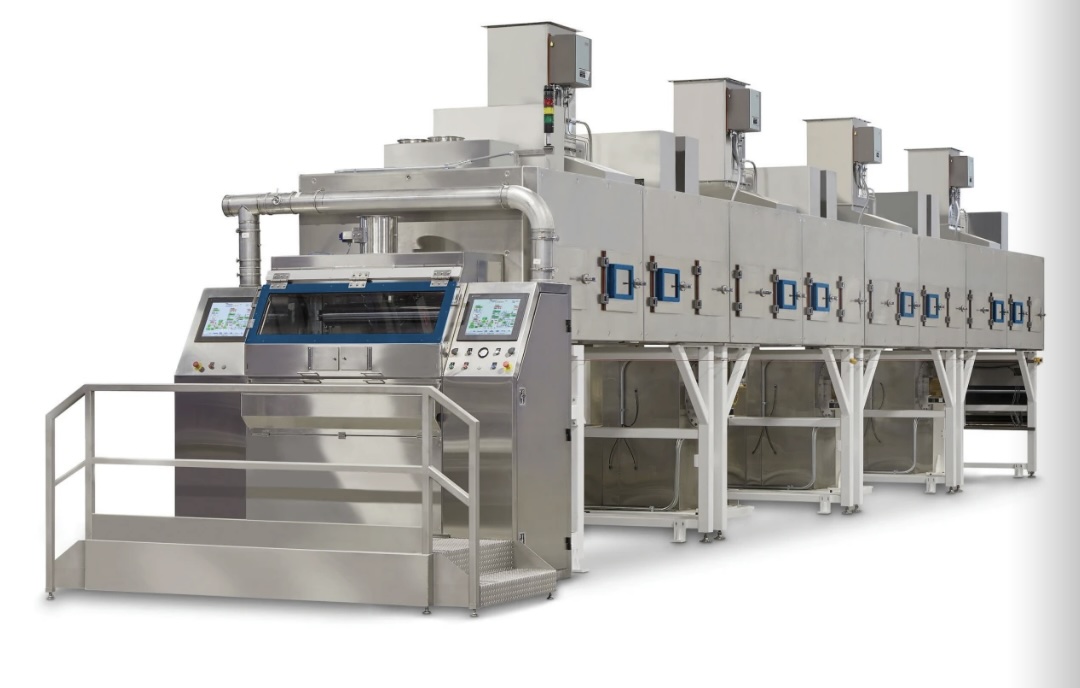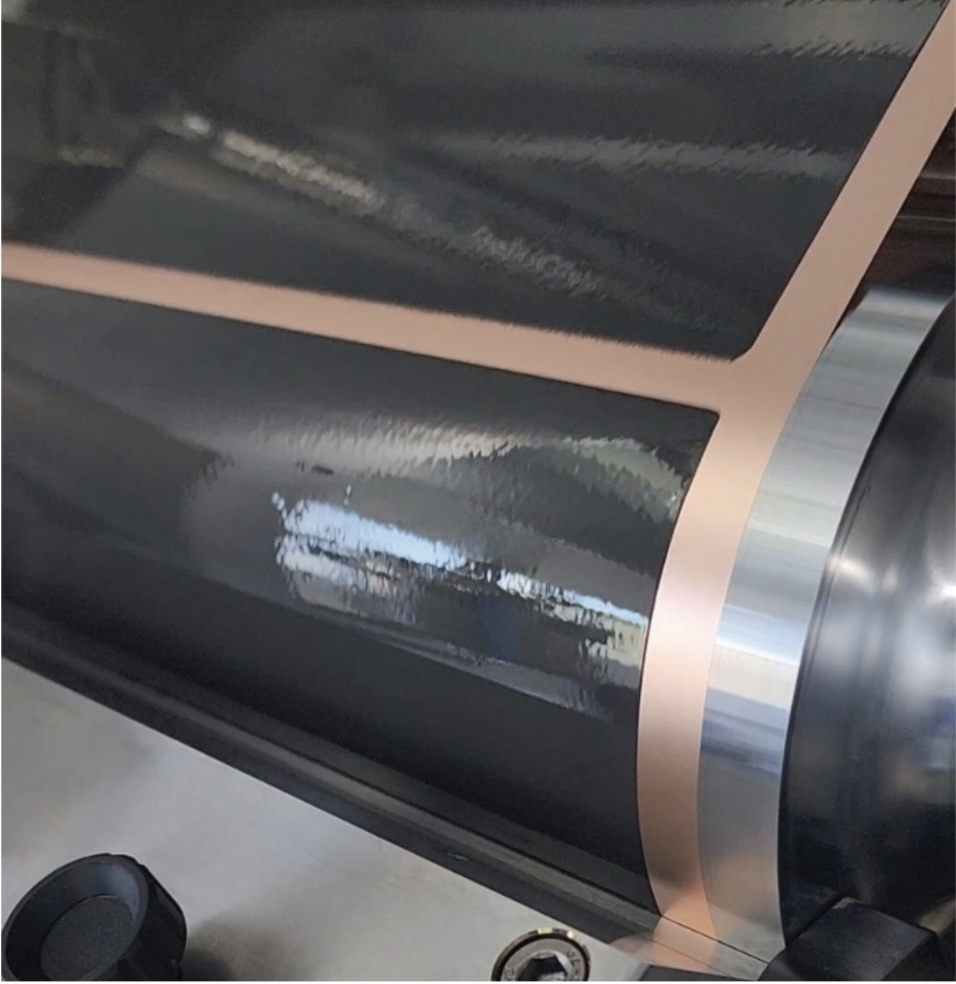Revolutionizing Lithium-lon Battery Manufacturing Advances in Slot-Die and Electrode Coating Technology
- Published: April 14, 2025

By Dave Grenwis, Marketing Manager, Delta ModTech Scott Zwierlein, Coating Process Engineer, Delta ModTech
As the global battery market surges toward an estimated $328 billion by 2028, innovations in manufacturing processes are becoming increasingly critical. The demand for smaller, safer and more energy-efficient batteries continues to drive the need for advanced electrode coating technologies. Among these, slot-die coating has emerged as a transformative solution, particularly with its groundbreaking patch-coating capabilities.
Slot-Die Coating: The Future of Battery Manufacturing
Slot-die coating has solidified its place as a leading technology in lithium-ion (Li-ion) battery production. Unlike traditional mechanical metering systems such as knife-over-roll or reverse-roll coating, slot-die uses volumetric pre-metering to apply a precise, uniform coating. This method eliminates excess material removal, reduces waste, and achieves superior thinness and uniformity.
Key Advantages:
- Thinner Coating: Slot-die achieves wet coatings as thin as 2 microns, far surpassing mechanical methods. As battery designs push for smaller, higher-performance cells, this capability ensures manufacturers can meet evolving demands.
- Enhanced Uniformity: Volumetric pre-metering minimizes variation, ensuring a consistent thickness across the substrate. Cross-web uniformity of 2 percent and machine-direction precision of +/-1 percent make slot-die ideal for advanced battery applications.
- Defect Reduction: By dispensing directly through the slot-die head, the process avoids abrasive grinding and significantly reduces streaks or defects caused by trapped particles.
- Less Waste: The closed system design minimizes evaporation, eliminates excess material disposal, and supports intermittent and patch-coating without cleanup requirements.
- Improved Safety: With hazardous materials like volatile organic solvents Nickel and Lithium in use, slot-die's enclosed system reduces operator exposure to harmful substances.
The Role of Patch-Coating
A standout advancement in slot-die technology is of reliable, roll-to-roll patch-coating, also known as intermittent or skip coating. This process starts and stops the coating application, leaving precise uncoated areas critical for battery assembly.
In Li-ion batteries, uncoated edges on current collectors are necessary for proper welding and electrical conduction. Traditional continuous coating methods require additional downstream processing to remove excess slurry, adding cost and complexity.
Patch-coating eliminates this step, improving production efficiency and reducing waste.
 Benefits of Patch-Coating:
Benefits of Patch-Coating:
- Eliminates Downstream Processing: Without patch-coating, manufacturers must use lasers or scrubbing methods to remove unwanted coating material, adding time and cost. Patch-coating bypasses this entirely.
- Minimizes Waste: Coatings are costly, and patch-coating ensures every drop is used effectively in battery production.
- Boosts Safety: By removing excess coating, patch-coating reduces hazardous material handling, lowering safety risks.
- The Battery Electrode Coating Process: Foundations and Innovations
The basic structure of a Li-ion battery electrode involves a slurry (typically carbon, graphite and a binder) applied as a thin film onto a current collector, such as aluminum for cathodes or copper for anodes. These films are layered with a separator between them and assembled into wound or stacked configurations.
While the methodology for battery assembly remains consistent, coating requirements continue to evolve. Mechanical metering systems like knife-over-roll and reverse-roll coating have long been used but struggle to meet the precision and quality demands of modern battery production.
In contrast, slot-die coating addresses these challenges with key innovations:
- Dimensional Accuracy: Utilizing high-resolution encoders and servo actuators enable precise patch dimensions, with tolerances under 1 mm.
- Repeatability: Inline scanning cameras ensure consistent patch quality and provide feedback for automatic corrections.
- Backside Registration: Fiber-optics and camera systems align front and backside coatings with exceptional precision.
- Tandem Systems: Advanced machines now coat, dry and measure both sides of the substrate in a single operation, improving efficiency and reducing material handling.
Future-Proofing Battery Manufacturing
As the battery market continues to commoditize, manufacturers face increasing pressure to reduce costs while maintaining quality. Slot-die coating offers a scalable, high-performance solution to meet these demands. Its ability to deliver precise, uniform coatings and support advanced techniques like patch-coating positions manufacturers to stay competitive in this rapidly evolving industry.
By investing in technologies like slot-die, battery producers can future-proof their operations, ensuring they are equipped to handle the next generation of Li-ion batteries — smaller, more powerful and safer than ever before.
About the Author
Scott Zwierlein works directly with customers to develop coating and drying manufacturing solutions. With 23 years of coating engineering experience, he has worked with customers in a range of industries, including batteries, capacitors, fuel cells and medical parts. Dave Grenwis has 20 years experience in developing content to instruct, inform and promote Delta ModTech's web handling capabilities across all industries.




